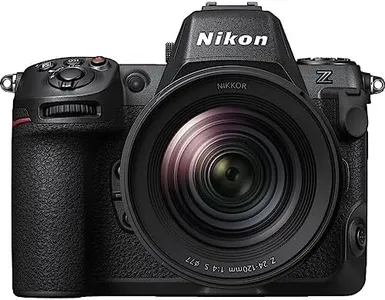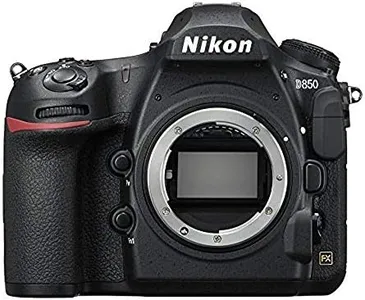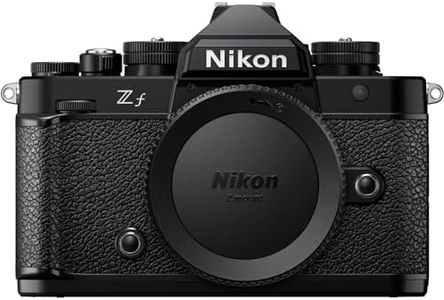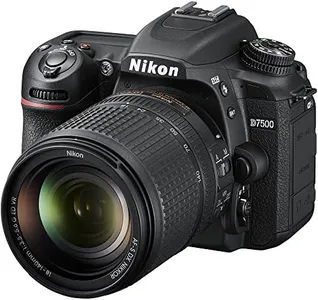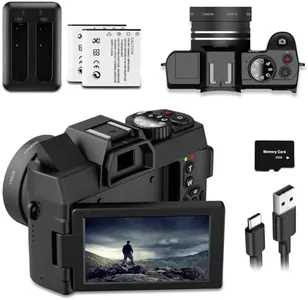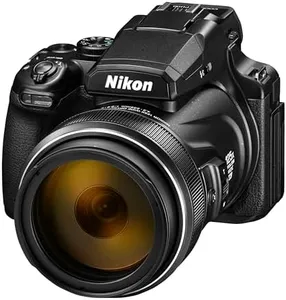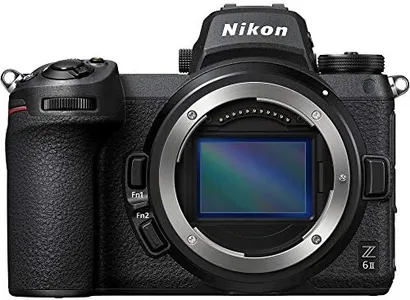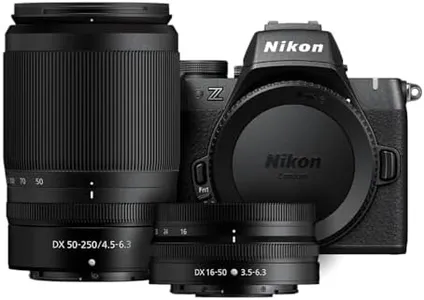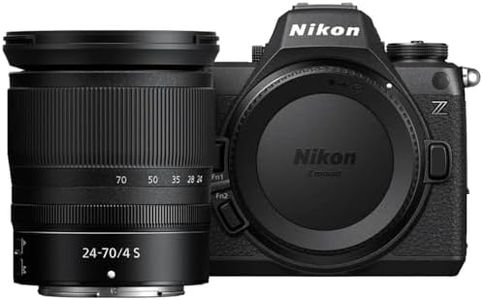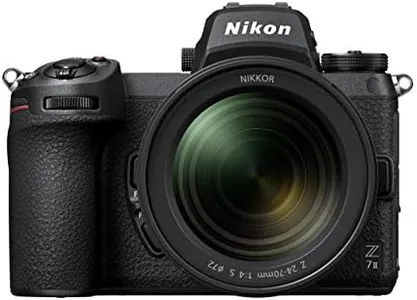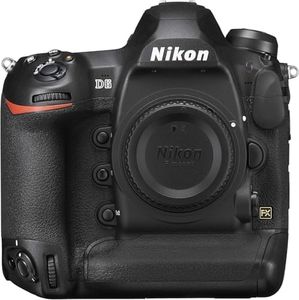10 Best Nikon Cameras 2025 in the United States
Our technology thoroughly searches through the online shopping world, reviewing hundreds of sites. We then process and analyze this information, updating in real-time to bring you the latest top-rated products. This way, you always get the best and most current options available.

Our Top Picks
Winner
Nikon Z 8 with Zoom Lens | Professional full-frame mirrorless hybrid stills/video hybrid camera with 24-120mm f/4 lens | Nikon USA Model
Most important from
211 reviews
The Nikon Z 8 is a powerful full-frame mirrorless camera designed for professionals who want top-tier performance for both photos and videos. It features a large 45.7-megapixel stacked CMOS sensor that delivers highly detailed images, and a wide ISO range up to 102,400 for shooting in various light conditions. Its autofocus system is one of Nikon’s most advanced, using deep learning to track a wide variety of subjects accurately, even in very low light, making it excellent for fast action or wildlife photography.
For video, the Z 8 supports impressive internal 8K at 60 frames per second and 4K at 120 fps, plus 12-bit RAW recording options, giving videographers lots of flexibility and high-quality footage. The camera includes sensor-shift image stabilization to help keep shots steady, which is useful for both stills and video. The included 24-120mm f/4 lens covers a versatile zoom range suitable for landscapes, portraits, and general photography.
Build quality and ergonomics are solid, with a fully electronic viewfinder offering 100% coverage and a tilting touchscreen that’s easy to use. The camera is fairly lightweight for its capabilities, weighing just over 3 pounds, and supports dual memory card slots for extended shooting. While the bundled lens’s maximum aperture of f/4 isn’t very fast for low light or shallow depth of field compared to prime lenses, and the camera relies on sensor-shift stabilization rather than in-lens stabilization, it offers blazing-fast continuous shooting speeds up to 120 fps that benefit specific action photography scenarios. The Nikon Z 8 with the 24-120mm zoom lens is an excellent choice for professionals and serious enthusiasts seeking a versatile, hybrid camera excelling in both high-resolution stills and cutting-edge video capabilities, particularly for dynamic subjects.
Most important from
211 reviews
Nikon D850 FX-Format Digital SLR Camera Body
Most important from
775 reviews
The Nikon D850 is a powerful full-frame DSLR that stands out for its impressive 45.7 megapixels, offering incredible detail and color accuracy, making it an excellent choice for photographers who demand high-resolution images. Its back side illuminated (BSI) sensor enhances performance in low-light conditions, minimizing noise and maximizing dynamic range.
For those into action photography, the D850's capability to shoot up to 9 frames per second with full autofocus ensures you won't miss a moment. The autofocus system is robust, making it suitable for fast-moving subjects. Additionally, with advanced video options, including 4K Ultra HD and slow-motion recording at 1080p, it caters to videographers as well.
The tilting touchscreen adds a level of flexibility for shooting from different angles, while the build quality feels durable and professional, which is great for fieldwork. Battery life is another strong point, allowing for extended shooting sessions without needing to recharge frequently. However, the D850 does come with some drawbacks. Its size and weight might be a concern for those looking for a lightweight camera; it's certainly more substantial compared to mirrorless options. Also, while it supports a wide range of Nikon lenses, some may find the need to invest in high-quality glass to fully utilize its capabilities. Additionally, the learning curve can be steep for beginners, given the camera’s extensive features and settings.
The Nikon D850 is an outstanding choice for professionals and serious enthusiasts who prioritize image quality and versatility, but it may not be the best fit for casual users or those seeking a more portable and straightforward option.
Most important from
775 reviews
Nikon Z5 II with Telephoto Zoom Lens | Full-Frame mirrorless Stills/Video Camera with 24-200mm Wide-Angle to telephoto Zoom Lens | Nikon USA Model
Most important from
51 reviews
The Nikon Z5 II is a full-frame mirrorless camera with a 24.5-megapixel sensor, offering good resolution for both photos and videos. Its ISO range is very wide, up to 204,800, which means it can perform well in low light, and the built-in optical stabilization helps keep shots steady. The autofocus system is advanced, automatically recognizing subjects like people, animals, and vehicles, and it works well even in very dim conditions. For video, it supports up to 4K recording at 30 frames per second, suitable for casual videography and vlogging. The included 24-200mm telephoto zoom lens is versatile, covering wide-angle to telephoto shots, making it a great all-in-one option for travel or everyday use.
The camera features a bright electronic viewfinder and a 3.2-inch articulating screen, helpful for shooting at various angles. Dual memory card slots add reliability for storage. The body is designed for comfort and durability, feeling familiar to users switching from DSLRs. Wireless connectivity lets you easily transfer images to your phone or cloud services, adding convenience.
A downside is the lens aperture range (f/4-6.3), which is a bit slower in low light compared to faster lenses, and the camera weighs nearly 4 pounds, which might be noticeable for extended handheld use. The Nikon Z5 II with its versatile lens presents a solid choice for beginners and enthusiasts wanting a reliable, full-frame system for photography and video without overwhelming complexity.
